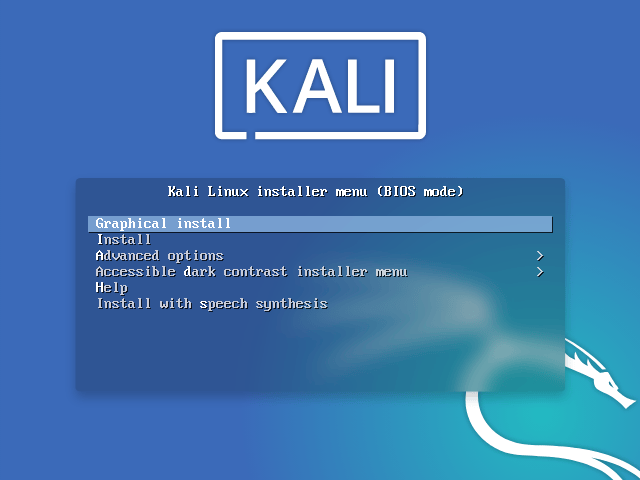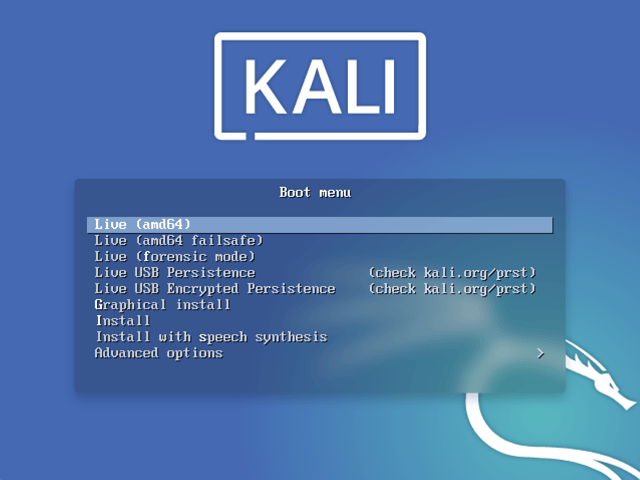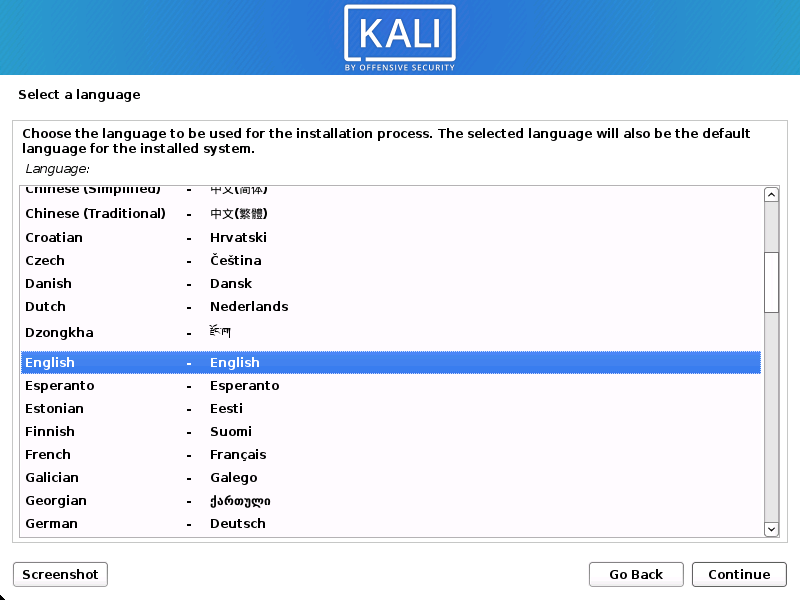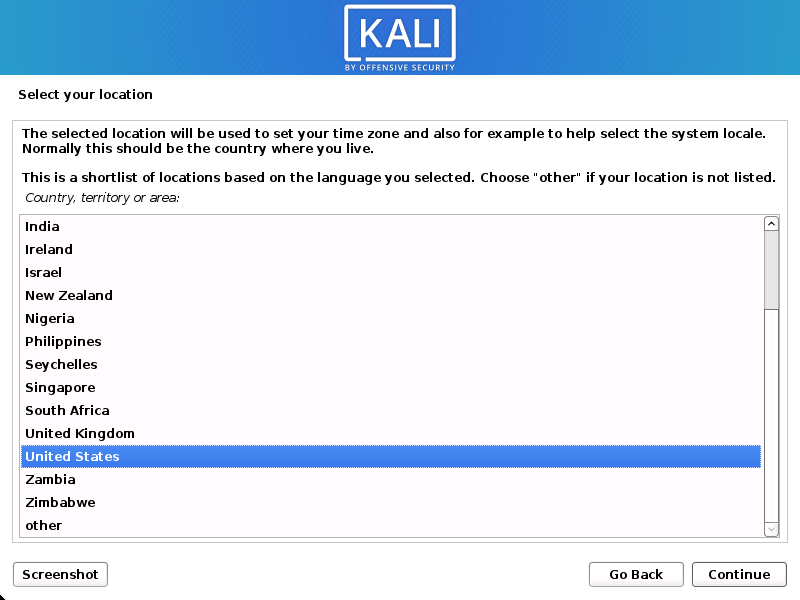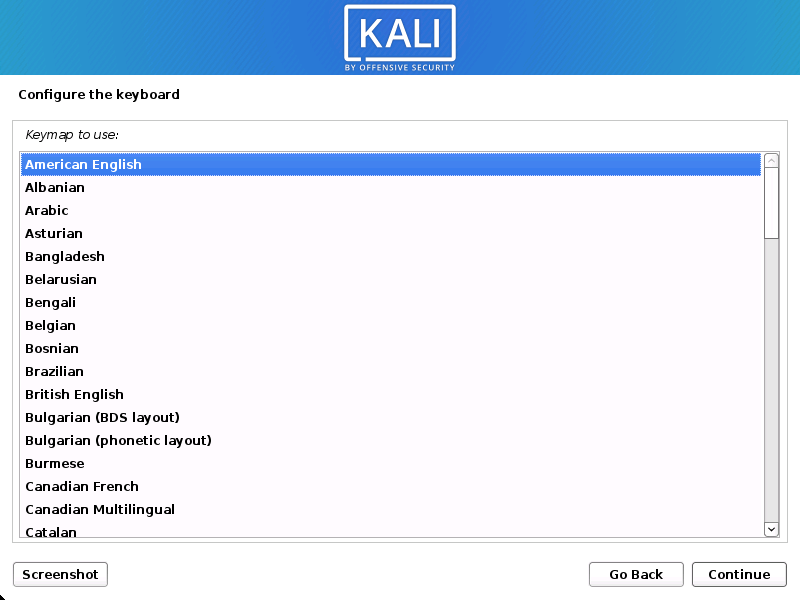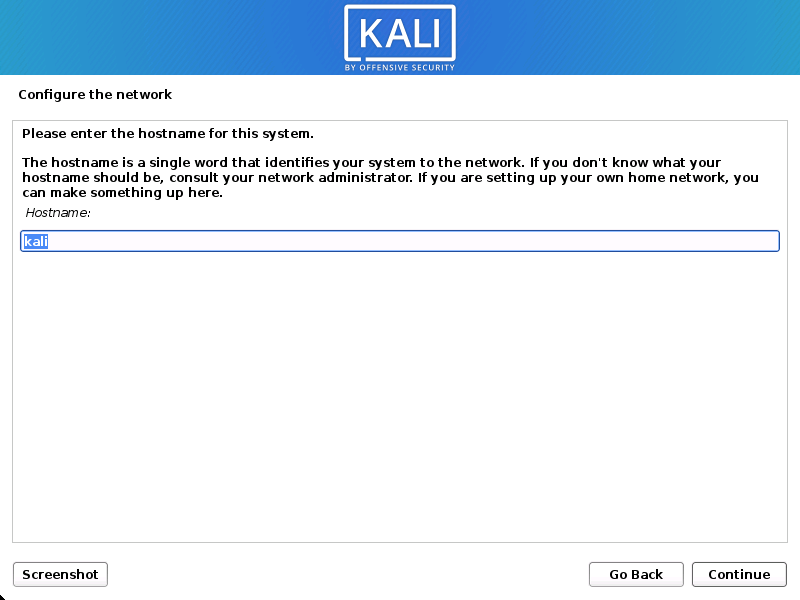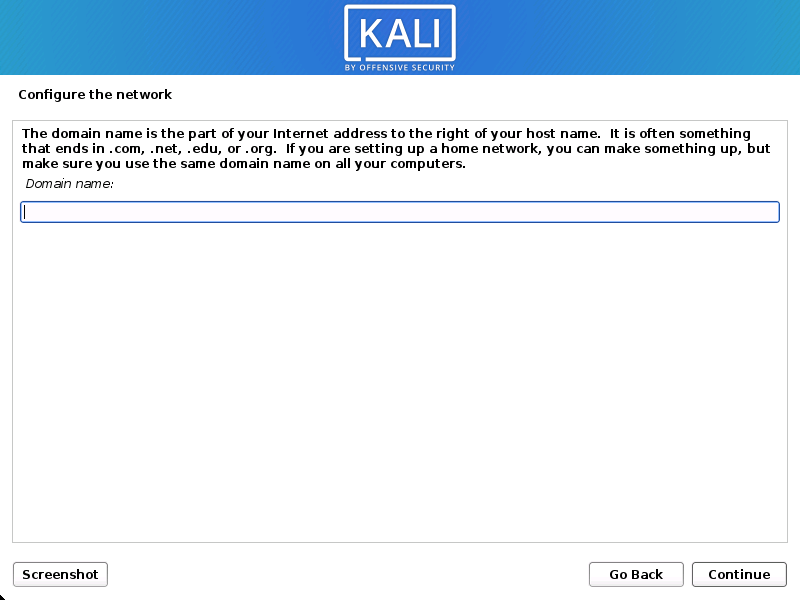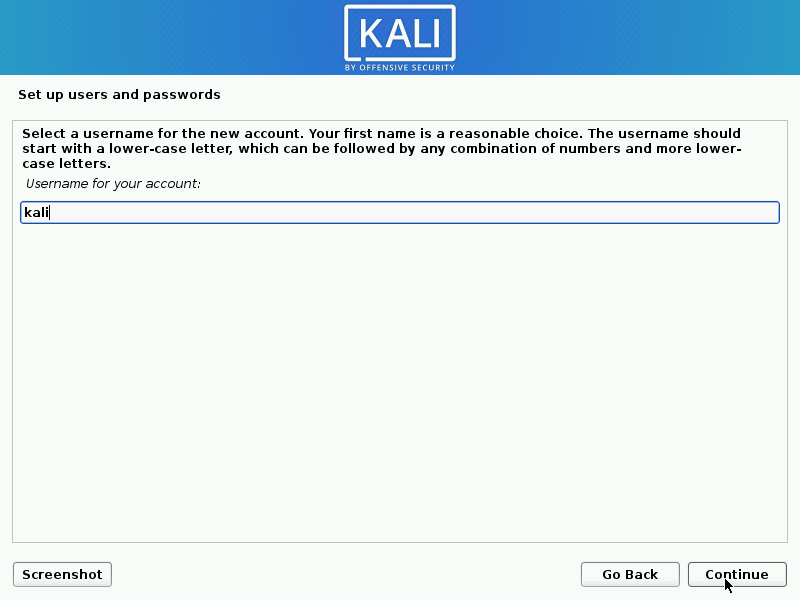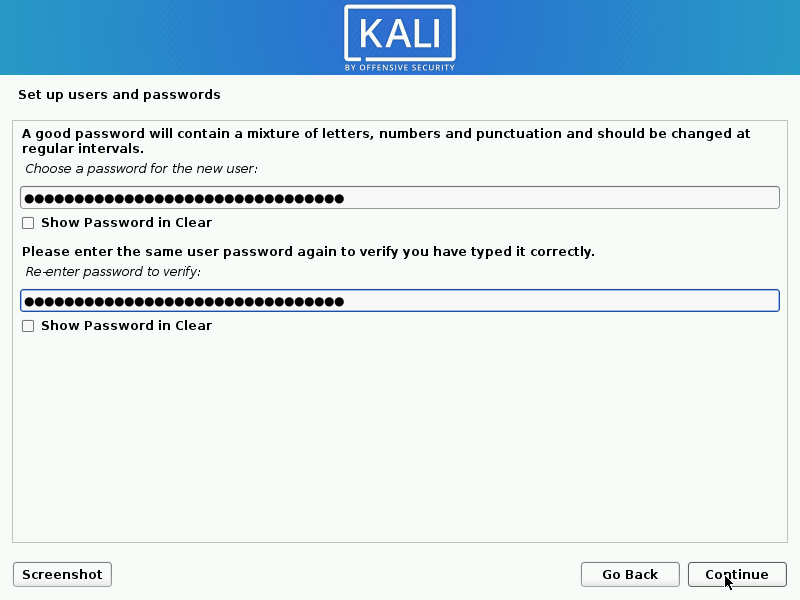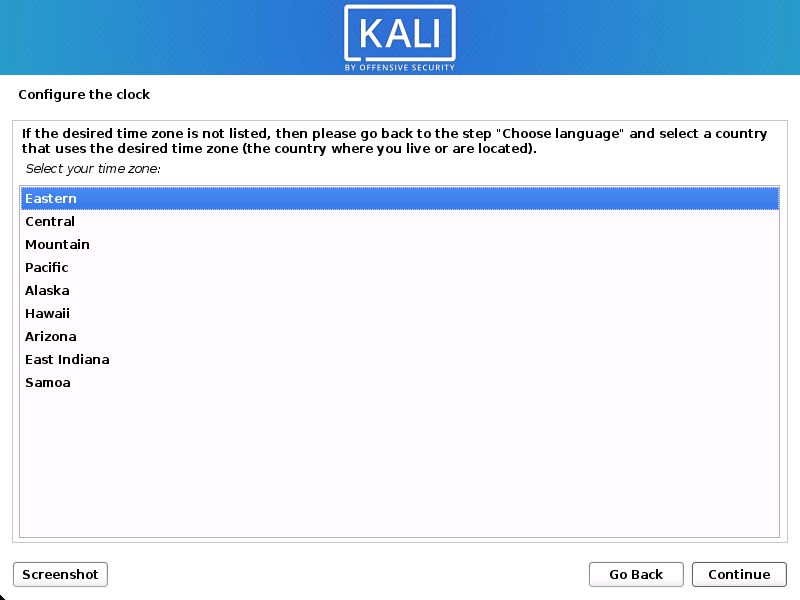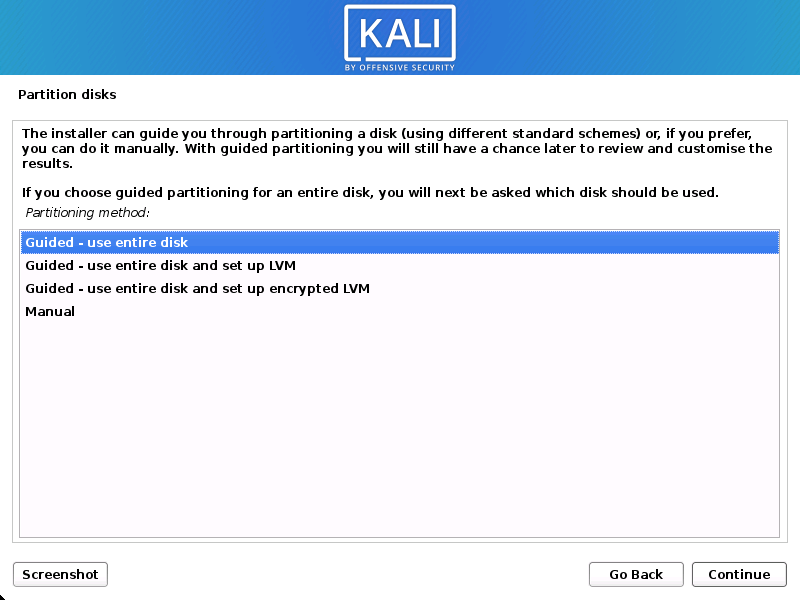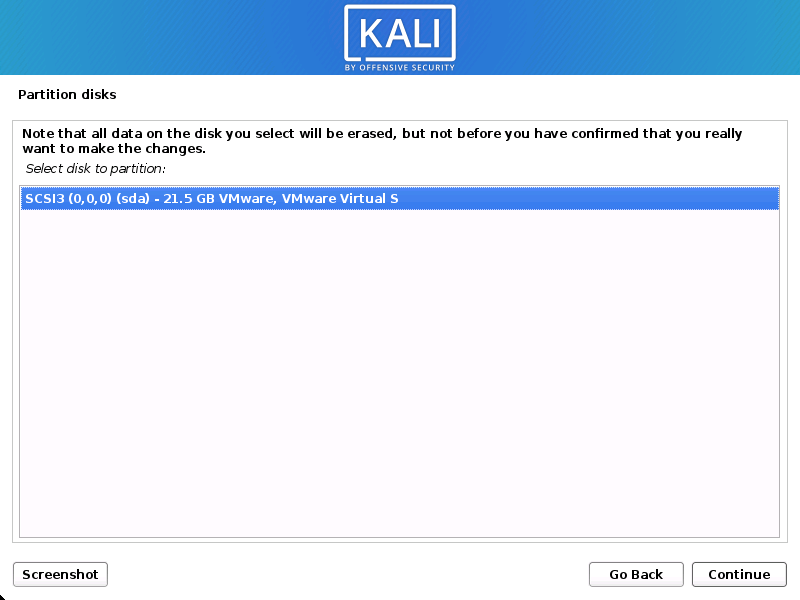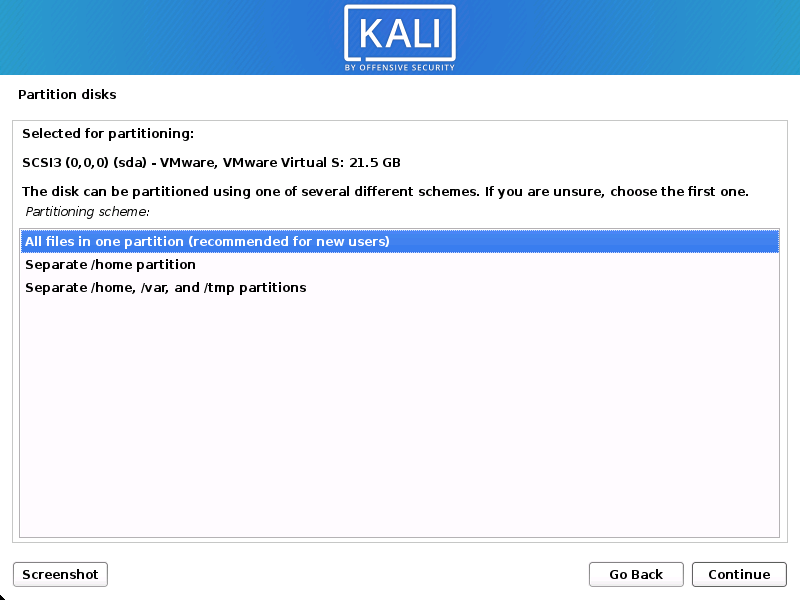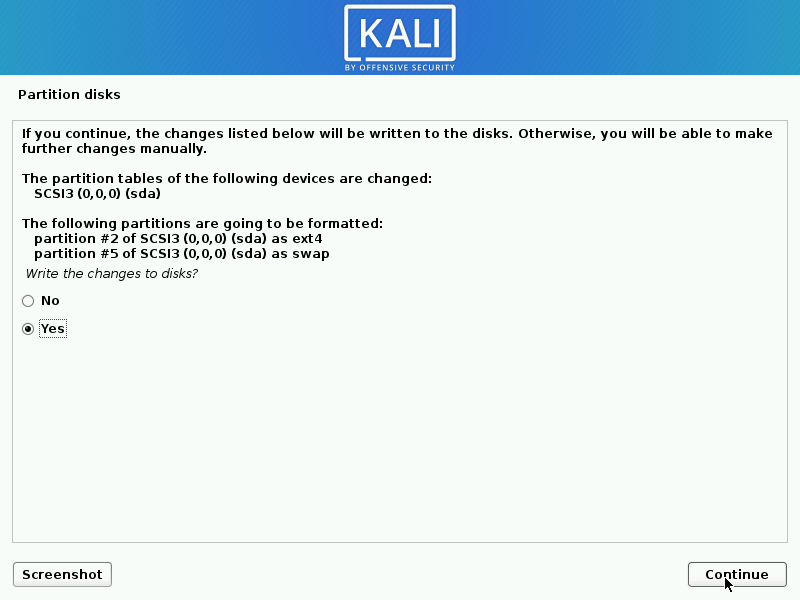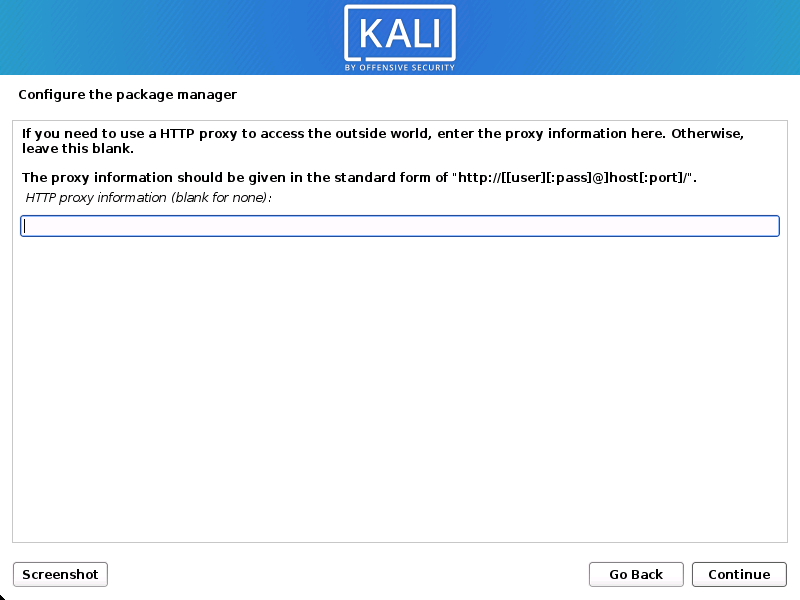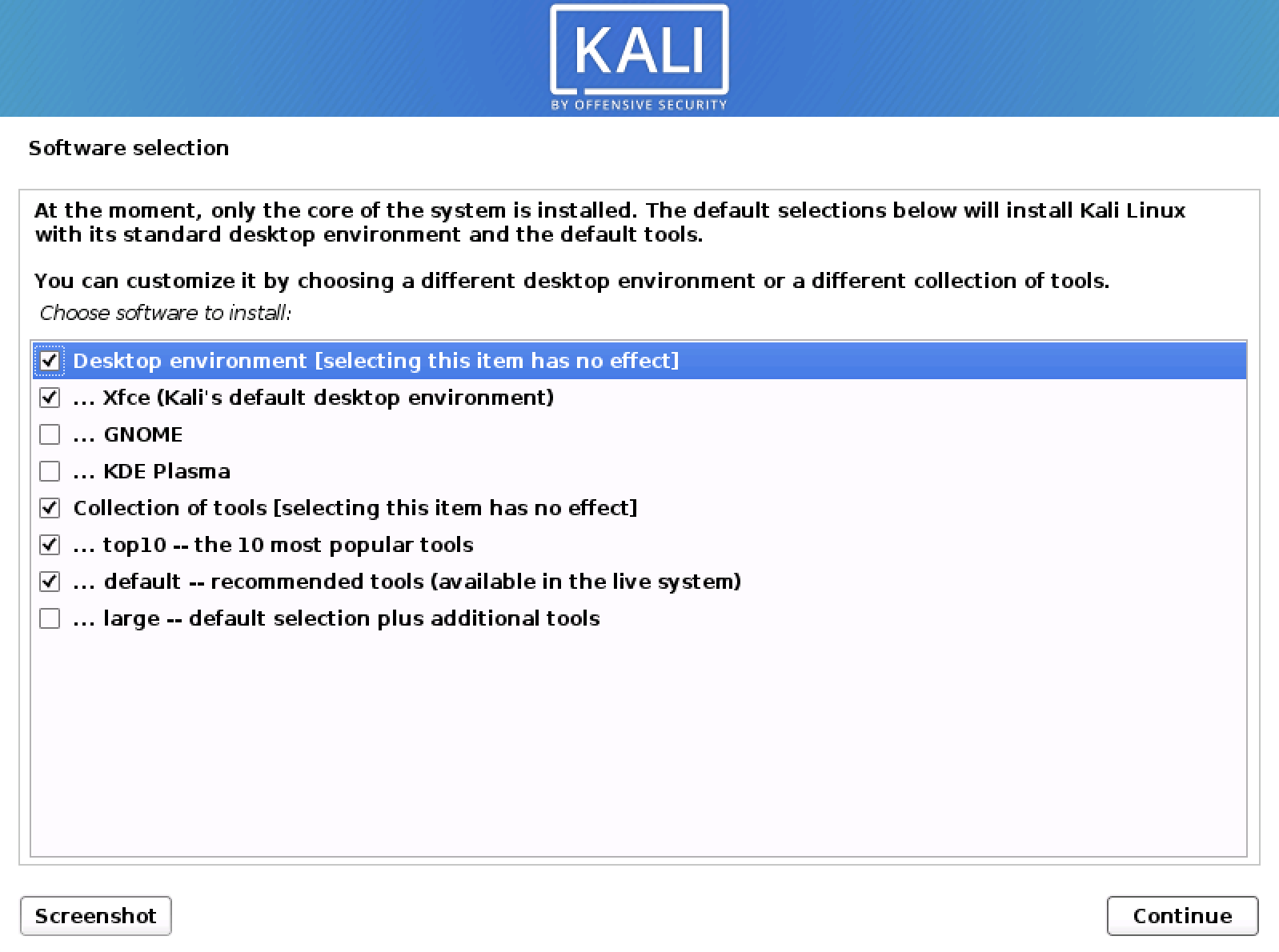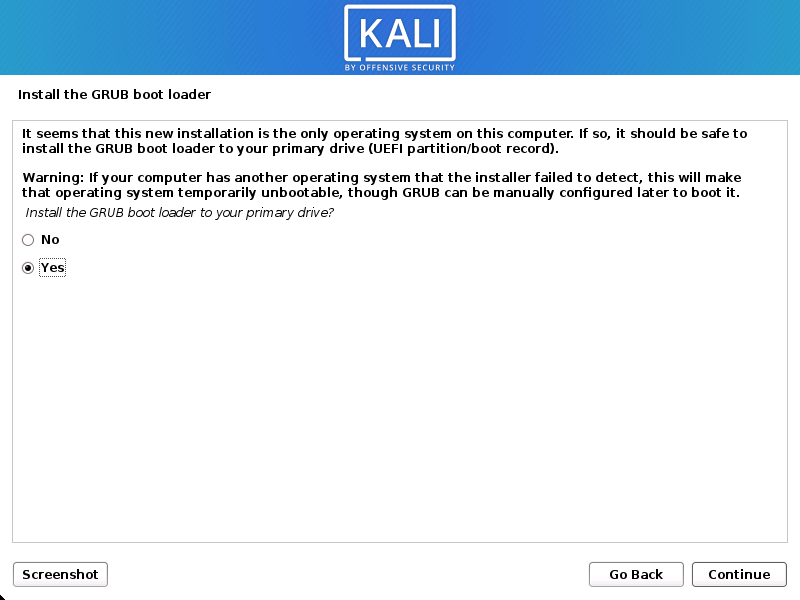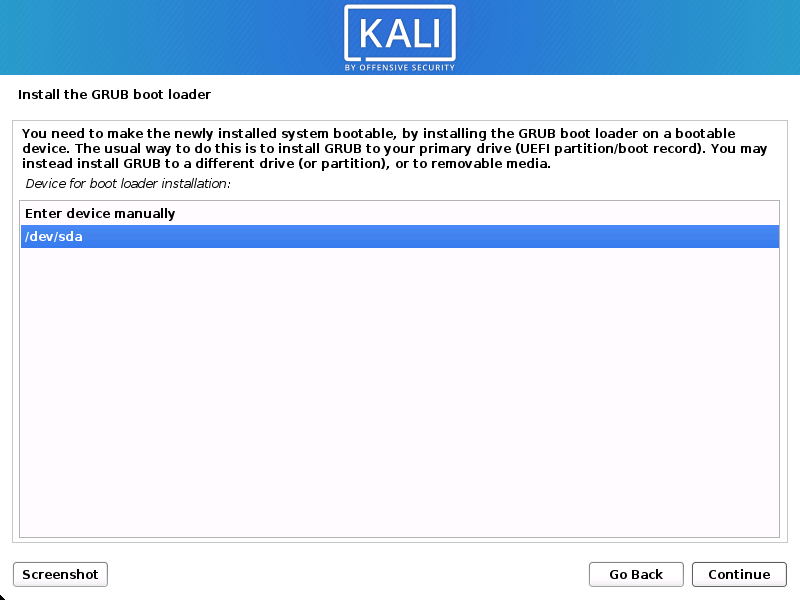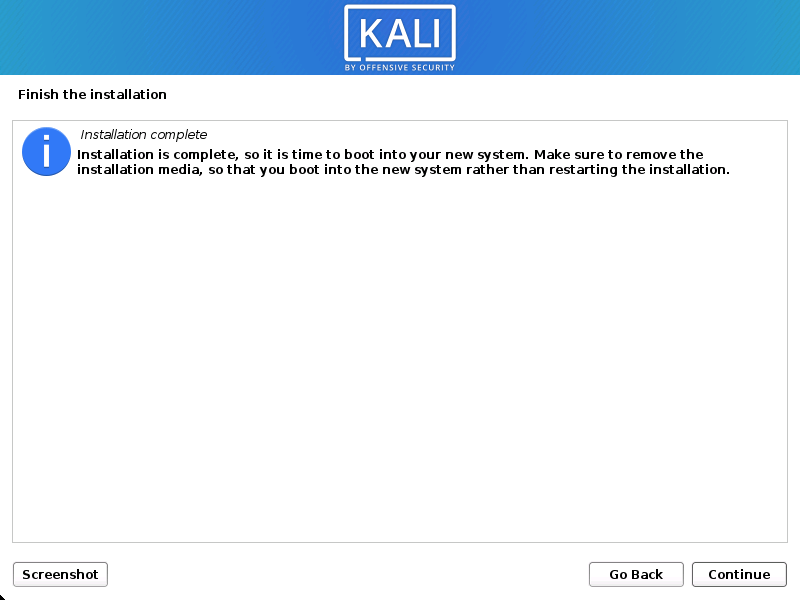- Kali linux step by step installation
- System Requirements
- Installation Prerequisites
- Preparing for the Installation
- Kali Linux Installation Procedure
- Language
- Network
- User Accounts
- Clock
- Encrypted LVM
- Proxy Information
- Metapackages
- Boot Information
- Reboot
- Post Installation
- How to Install Kali Linux in the Cloud
- Set up a Debian-based droplet
- Install Kali Linux step by step
- How can I verify if the Kali Linux installation was okay?
- Final thoughts
Kali linux step by step installation
Installing Kali Linux (single boot) on your computer is an easy process. This guide will cover the basic install (which can be done on bare metal or guest VM), with the option of encrypting the partition. At times, you may have sensitive data you would prefer to encrypt using Full Disk Encryption (FDE). During the setup process you can initiate an LVM encrypted install on either Hard Disk or USB drives.
First, you’ll need compatible computer hardware. Kali Linux is supported on amd64 (x86_64/64-Bit) and i386 (x86/32-Bit) platforms. Where possible, we would recommend using the amd64 images. The hardware requirements are minimal as listed in the section below, although better hardware will naturally provide better performance. You should be able to use Kali Linux on newer hardware with UEFI and older systems with BIOS.
Our i386 images, by default use a PAE kernel, so you can run them on systems with over 4 GB of RAM.
In our example, we will be installing Kali Linux in a fresh guest VM, without any existing operating systems pre-installed. We will explain other possible scenarios throughout the guide.
System Requirements
The installation requirements for Kali Linux will vary depending on what you would like to install and your setup. For system requirements:
- On the low end, you can set up Kali Linux as a basic Secure Shell (SSH) server with no desktop, using as little as 128 MB of RAM (512 MB recommended) and 2 GB of disk space.
- On the higher end, if you opt to install the default Xfce4 desktop and the kali-linux-default metapackage, you should really aim for at least 2 GB of RAM and 20 GB of disk space.
- When using resource-intensive applications, such as Burp Suite, they recommend at least 8 GB of RAM(and even more if it large web application!) or using simultaneous programs at the same time.
Installation Prerequisites
This guide will make also the following assumptions when installing Kali Linux:
- Using the amd64 installer image.
- CD/DVD drive / USB boot support.
- Single disk to install to.
- Connected to a network (with DHCP & DNS enabled) which has outbound Internet access.
We will be wiping any existing data on the hard disk, so please backup any important information on the device to an external media.
Preparing for the Installation
Download Kali Linux (We recommend the image marked Installer).
Burn The Kali Linux ISO to DVD or image Kali Linux Live to USB drive. (If you cannot, check out the Kali Linux Network Install).
Backup any important information on the device to an external media.
Ensure that your computer is set to boot from CD/DVD/USB in your BIOS/UEFI.
Kali Linux Installation Procedure
- To start your installation, boot with your chosen installation medium. You should be greeted with the Kali Linux Boot screen. Choose either Graphical install or Install (Text-Mode). In this example, we chose the Graphical install.
If you’re using the live image instead, you will see another mode, Live, which is also the default boot option.
Language
- Select your preferred language. This will be used for both the setup process and once you are using Kali Linux.
- Specify your geographic location.
- Select your keyboard layout.
Network
- The setup will now probe your network interfaces, looks for a DHCP service, and then prompt you to enter a hostname for your system. In the example below, we’ve entered kali as our hostname.
If there is no network access with DHCP service detected, you may need to manually configure the network information or do not configure the network at this time.
- If there isn’t a DHCP service running on the network, it will ask you to manually enter the network information after probing for network interfaces, or you can skip.
- If Kali Linux doesn’t detect your NIC, you either need to include the drivers for it when prompted, or generate a custom Kali Linux ISO with them pre-included.
- If the setup detects multiple NICs, it may prompt you which one to use for the install.
- If the chosen NIC is 802.11 based, you will be asked for your wireless network information before being prompted for a hostname.
- You may optionally provide a default domain name for this system to use (values may be pulled in from DHCP or if there is an existing operating systems pre-existing).
User Accounts
- Next, create the user account for the system (Full name, username and a strong password).
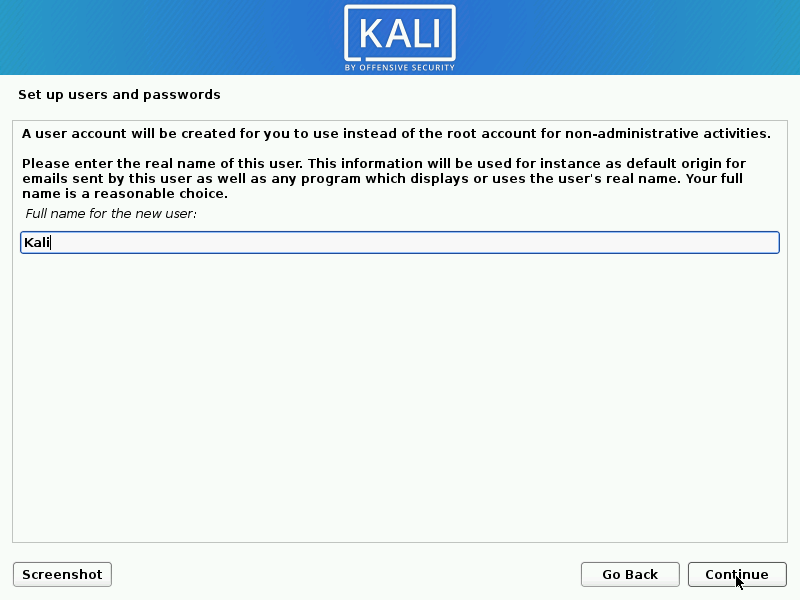
Clock
- The installer will now probe your disks and offer you various choices, depending on the setup.
In our guide, we are using a clean disk, so we have four options to pick from. We will select Guided — the entire disk, as this is the single boot installation for Kali Linux, so we do not want any other operating systems installed, so we are happy to wipe the disk.
If there is an pre-existing data on the disk, you will have have an extra option (Guided — use the largest continuous free space) than the example below. This would instruct the setup not to alter any existing data, which is perfect for for dual-booting into another operating system. As this is not the case in this example, it is not visible.
Experienced users can use the “Manual” partitioning method for more granular configuration options, which is covered more in our BTRFS guide.
If you want to encrypt Kali Linux, you can enable Full Disk Encryption (FDE), by selecting Guided — used entire disk and setup encrypted LVM. When selected, later on in the setup (not in this guide) prompt you to enter a password (twice). You will have to enter this password every time you start up Kali Linux.
- Select the disk to be partitioned.
- Depending on your needs, you can choose to keep all your files in a single partition — the default — or to have separate partitions for one or more of the top-level directories.
If you’re not sure which you want, you want “All files in one partition”.
- Next, you’ll have one last chance to review your disk configuration before the installer makes irreversible changes. After you click Continue, the installer will go to work and you’ll have an almost finished installation.
Encrypted LVM
If enabled in the previous step, Kali Linux will now start to perform a secure wipe of the hard disk, before asking you for a LVM password.
Please sure a strong password, else you will have to agree to the warning about a weak passphrase.
This wipe may take “a while” (hours) depending on the size and speed of the drive.
If you wish to risk it, you can skip it.
Proxy Information
- Kali Linux uses a central repository to distribute applications. You’ll need to enter any appropriate proxy information as needed.
Metapackages
If network access was not setup, you will want to continue with setup when prompt.
If you are using the Live image, you will not have the following stage.
- Next you can select which metapackages you would like to install. The default selections will install a standard Kali Linux system and you don’t really have to change anything here.
Please refer to this guide if you prefer to change the default selections.
Boot Information
- Next confirm to install the GRUB boot loader.
- Select the hard drive to install the GRUB bootloader in (it does not by default select any drive).
Reboot
- Finally, click Continue to reboot into your new Kali Linux installation.
Post Installation
Now that you’ve completed installing Kali Linux, it’s time to customize your system.
The General Use section has more information and you can also find tips on how to get the most out of Kali Linux in our User Forums.
Updated on: 2021-Sep-27
Author: gamb1t
Источник
How to Install Kali Linux in the Cloud
Kali Linux is one of the top cybersecurity Linux distributions available. It’s a great distro created by the Offensive Security group, and we at SecurityTrails love it. In fact, we’ve written a few articles in the past showing the true power of Kali Linux, as in the Top 20 Kali Linux Tools, or when we mentioned some of today’s most popular ethical hacking tools.
But until now, we’ve never covered how to get access to those Kali Linux tools. The traditional method calls for setting up a local machine in your home computer, and installing the GUI-based version. However, there are other, faster ways to get access to all the Kali Linux features within an inexpensive cloud situation.
In this post, we’ll take you through a detailed guide on how to install Kali Linux in the Cloud hosting services from one of the internet’s most popular providers: DigitalOcean.
This type of Kali Linux installation is especially useful for infosec and cybersecurity researchers, red teams and bug hunters who want to access Kali Linux features quickly and without any full installation in their desktop computers or office-based systems.
Installing Kali Linux on DigitalOcean using virtual OS images is possible; however, it does take time as we need to build a custom image first.
Instead, to get what we want (Kali Linux tools) we decided to go for a minimal Debian 9.x setup, and install all the Kali Linux packages manually. The result will be a 100% Debian system, powered by Kali Linux features. Let’s begin.
Set up a Debian-based droplet
If you don’t have an account at DigitalOcean, go to https://www.digitalocean.com and open your user account. We recommend DO as it’s a solid provider, with cheap pricing and a stable network. Of course, you can choose any alternative cloud provider such as AWS, Google Cloud, Vultr, etc., as this guide is fully compatible as long as you keep a minimal Debian-based setup.
Once you are there, we suggest launching a droplet with at least 1GB of RAM and 50GB of disk space so you have enough resources to install Kali Linux without any problem.
We will choose Debian 9.x as the default operating system for this droplet.
Once that’s completed, choose the $10/mo package — that was the one we used for this Kali Linux installation in the DigitalOcean cloud.
Once the droplet has been created, you’ll be able to manage it from the Droplets option located in the left menu:
Follow us on Twitter to receive updates!
Install Kali Linux step by step
Connect to your Debian server over SSH:
Replace “X.X.X.X” with your droplet public IP address.
It will ask for a password, or you can login automatically by using pre-configured ssh-keys imported from DigitalOcean.
Then setup the Kali Linux repo by issuing these commands:
If you get this error:
…then you may need to install an extra package to continue with the installation process:
Then, run the update command again:
As you can see, everything is ready, so it’s time to decide what Kali Linux setup we’re going to install. In our case, and taking the “go big or go home” route, we will install the complete Kali Linux set of tools and features.
You can first perform a search to see what packages are available:
This will show you all the possible kali-linux installation packages:
Fortunately, you can install whatever you need to specifically match your needs. In our case, we will install kali-linux-all (around 15GB) by running this command:
After 15 minutes, your Kali Linux installation will be ready. If you’re new to Kali Linux, some good advice is to read the Kali Linux docs along with running their cybersecurity tools, so you can run a few tests from this fresh installation.
During the installation, the installer will ask you some questions, as shown below:
Set your desired language for the keyboard setup. In our case it was English.
Other system services will need to be configured, such as Samba.
Configure Kismet user privileges and groups to access critical functions:
Specify how you want the sslh daemon to be run (using inetd or standalone):
At the end it will ask if you want to restart all the services during the package upgrade without asking:
Once the Kali Linux installation process is completed, we recommend performing a full system update:
Then reboot the machine to apply all the changes:
How can I verify if the Kali Linux installation was okay?
Verify that the kernel you are loading is the Kali kernel:
If you see “kali”, then it’s loading a Kali Linux kernel. Another way to test this is by typing the name of any of the popular cybersecurity tools shipped with Kali, such as Nikto, DNSChef, Lynis, etc.
That’s it! There’s no need for any further Kali Linux configuration—everything should be ready now.
Final thoughts
Kali Linux offers an all-in-one penetration testing platform for anyone new to the cybersecurity world, and at the same time providing a very good set of advanced features and tools for experienced infosec professionals as well.
After following this guide, you should be able to run most of the top Kali Linux features and tools without any problem.
Are you a penetration testing professional or a member of a red team? Take a look into our enterprise-grade product SurfaceBrowser™ to explore the attack surface area of any company and website in the world: discover associated IP addresses, open ports, DNS records, domain names, and SSL certificate critical information within seconds.
Book a demo with our sales team today, or sign up for our free API to start testing our passive DNS discovery service.
Esteban is a seasoned security researcher and cybersecurity specialist with over 15 years of experience. Since joining SecurityTrails in 2017 he’s been our go-to for technical server security and source intelligence info.
Источник
